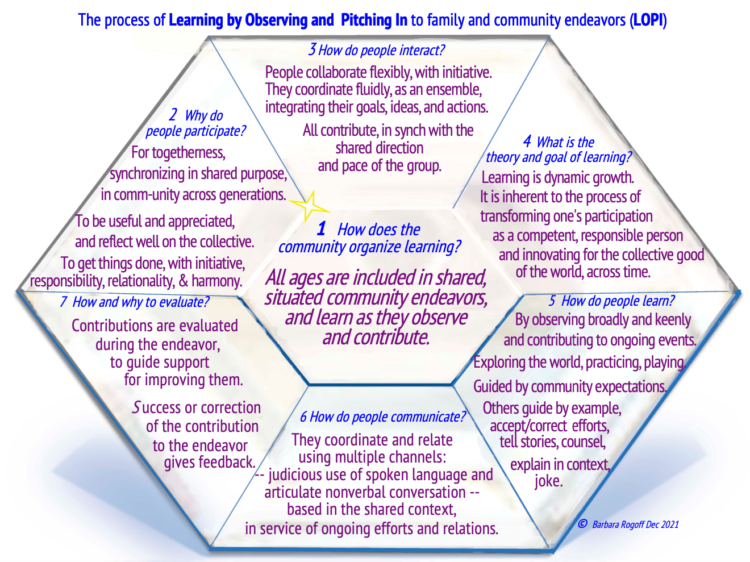Learning By Observing And Pitching In: An Award-Winning New Video
In some communities where children are included in a wide range of activities, children pay close attention and learn through contributing to the ongoing activities of their community. This way of learning appears to be especially common in many Indigenous communities of the Americas.
This video explores this insight. Visit the LOPI website for more information and resources.
More about the video:
A strength of many Mexican and Indigenous-heritage communities is a learning paradigm that involves Learning by Observing and Pitching In to family and community endeavors (LOPI). In describing key features of LOPI, we hope our work’s impact will include broadening participation by recognizing strengths for learning, inspiring changes in formal and informal educational settings, and serving communities in which LOPI prevails, by offering a tool for explaining these ways of learning to outside agencies.
Some of the key features of LOPI include community organization in which all ages contribute to shared endeavors, with voluntary and fulfilling participation, collaborating with initiative to foster the direction of the group, using a theory of learning that emphasizes growth in contributing to the greater good, and learning through keen attention and contribution.
Learn more about our Indigenous Wisdom and Worldview possibilities for human thriving in Kindred’s Evolved Nest series by Darcia Narvaez, PhD. See Kindred’s Worldview Chart by Four Arrows here (downloadable).
Barbara Rogoff is a psychologist who has studied learning across cultures, particularly Indigenous learning.
See her recent award winning short film with a quick summary of her work showing how Indigenous peoples learn through observation and pitching in, not through classroom teaching here.
Here is a list of her other short films created in past years:
The 2021 3-min NSF research video shows the power of contributing to a community in motivating learning, especially among students from communities that are underserved in schools. The sophisticated collaboration often found among Indigenous-heritage and Mexican-heritage children is part of becoming community-minded.
Our 2020 3-minute video shows how Indigenous and Mexican-heritage families foster children’s contributions at home and help them learn to collaborate.
Our 2018 3-minute video for NSF, “Learning by Helping,” shows the helpfulness of Mexican-heritage children whose families don’t have much schooling.
http://videohall.com/p/1318
Our 3-minute video from 2017 focuses on the sophisticated collaboration of Mexican-heritage and Indigenous American children.
http://videohall.com/p/1034
Our 3-minute 2016 video “Learning by Observing” draws attention to strengths for learning among Indigenous and Mexican-heritage children.
Our 2019 3-minute video shows the impressive ways that Mexican-heritage children collaborated in a planning task and programming a computer game.


